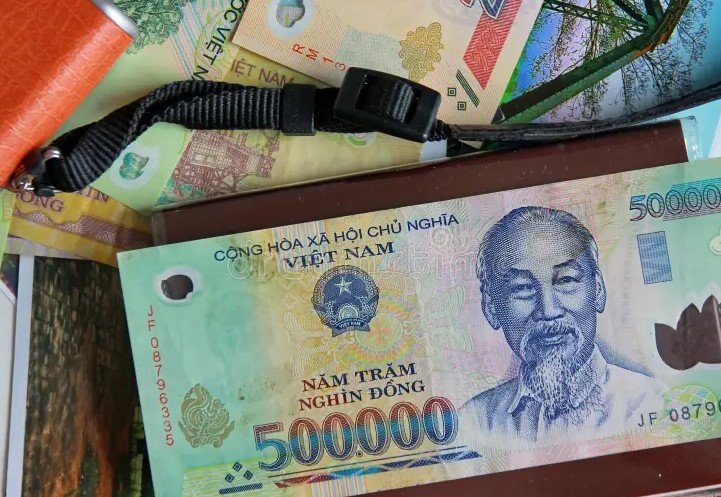Resolution 42 gives lenders sharper teeth in debt recovery, while credit growth helps blunt the impact of lingering NPL burdens
After a rough patch of credit woes, Vietnam’s banks are starting to show signs of easing pressure—at least on the bad debt front. Fresh mid-year numbers from several banks suggest a slow but meaningful improvement in non-performing loans (NPLs), as loan demand picks up and a key legal reform finally kicks in for real.
Resolution 42, which was just formalized into permanent law, is doing some heavy lifting. Combine that with steady credit growth, and lenders are feeling cautiously optimistic again—even if the picture isn’t entirely rosy across the board.
ACB’s Bad Loan Ratio Shrinks as Group 5 Sees Big Drop
Asia Commercial Bank (ACB) showed one of the clearer signs of recovery in the first half of 2025. Its total NPLs from Groups 3, 4, and 5—covering substandard, doubtful, and loss-making debts—dropped 7.9% compared to December 2024.
Group 5 loans, the riskiest tier, took a noticeable tumble.
The figure slid to roughly $235.8 million, down 12.6%. That’s real money.
ACB’s overall bad debt ratio now stands at a manageable 1.26%, giving it one of the leaner profiles among its peers. It’s not out of the woods, but the path is starting to look a little clearer.

VietABank’s Sharp Group 3 Decline Leads the Pack
VietABank, while smaller, delivered one of the more dramatic turnarounds.
Total NPLs fell to $38.9 million by the end of June—an 11% drop from January levels. But the standout was Group 3, where loans considered “substandard” dropped a whopping 67%.
That’s from $560,000 to just $160,000.
• Group 3: Down 67%
• Group 4: Also down
• Group 5: Declined as well
This kind of drop is rare in such a short span. It suggests targeted recovery efforts are working—or at the very least, borrowers are finding their feet again.
PGBank Buckles Under Rising NPLs, Especially in Substandard Loans
Not every lender is celebrating, though. PGBank is struggling.
Its NPL balance rose more than 42% in the first six months of 2025, crossing the $60 million mark. That’s a red flag—especially since all three risk categories saw increases.
Group 3 doubled from $7.3 million to $14.1 million. That’s where things get worrying.
Two things happened:
-
Loan quality worsened.
-
NPL ratio jumped from 2.57% to over 3.3%.
That’s a sizeable move in just half a year. It could point to internal strain—or broader weakness in its loan book.
LPBank Grows Lending, But NPL Ratio Still Ticks Up
LPBank is growing—and fast. But it’s also absorbing some bruises on the asset quality side.
As of June 30:
-
Total assets hit $20.5 billion (up 1%)
-
Customer lending grew 11.2%
-
Deposits climbed 10.6% to $12.5 billion
Despite these positives, the bank’s NPLs rose 23.3% to $259 million. That nudged its bad debt ratio from 1.58% to 1.76%.
Here’s a quick comparison of LPBank’s half-year shift:
| Category | January 2025 | June 2025 | Change |
|---|---|---|---|
| Total Assets | ~$20.3 billion | $20.5 billion | +1% |
| Customer Lending | — | +11.2% | Industry avg: 9.9% |
| NPL Balance | ~$210 million | $259 million+ | +23.3% |
| NPL Ratio | 1.58% | 1.76% | +0.18 pts |
So while LPBank is expanding, it’s carrying more risk than before. Whether that pays off—or backfires—remains to be seen.
Nam A Bank’s Asset Growth Outpaces the Industry
Then there’s Nam A Bank, which has been quietly powering ahead.
Assets are nearing $12.6 billion—up more than 30% in just six months. That’s serious momentum. Credit outstanding has risen by 14.7%, and deposits from businesses and individuals jumped 22%.
Those numbers signal healthy liquidity and expanding loan appetite.
Even more encouraging? Signs that asset quality is stabilizing. It’s still early, but officials say they’re seeing improvements in overdue debts. Whether that translates into lower NPL ratios by year-end is still an open question.
But you get the feeling the worst might be behind them.
Resolution 42 Becomes Law, Changing the Debt Recovery Game
A big reason for the shifting landscape is the official legalisation of Resolution 42, now cemented into law.
This rule allows banks to:
-
Seize collateral more quickly
-
Sell seized assets faster
-
Work with authorities to enforce repayments
It gives banks more teeth—and more speed. Before, trying to recover a loan was like wading through mud. Now? Not quite dry pavement, but a lot less slush.
For lenders with large corporate exposures, this is especially crucial. The old bottlenecks are loosening.
Even smaller banks are hopeful. One compliance officer at a mid-sized Vietnamese lender called it “the most bank-friendly rule we’ve had in years.”








